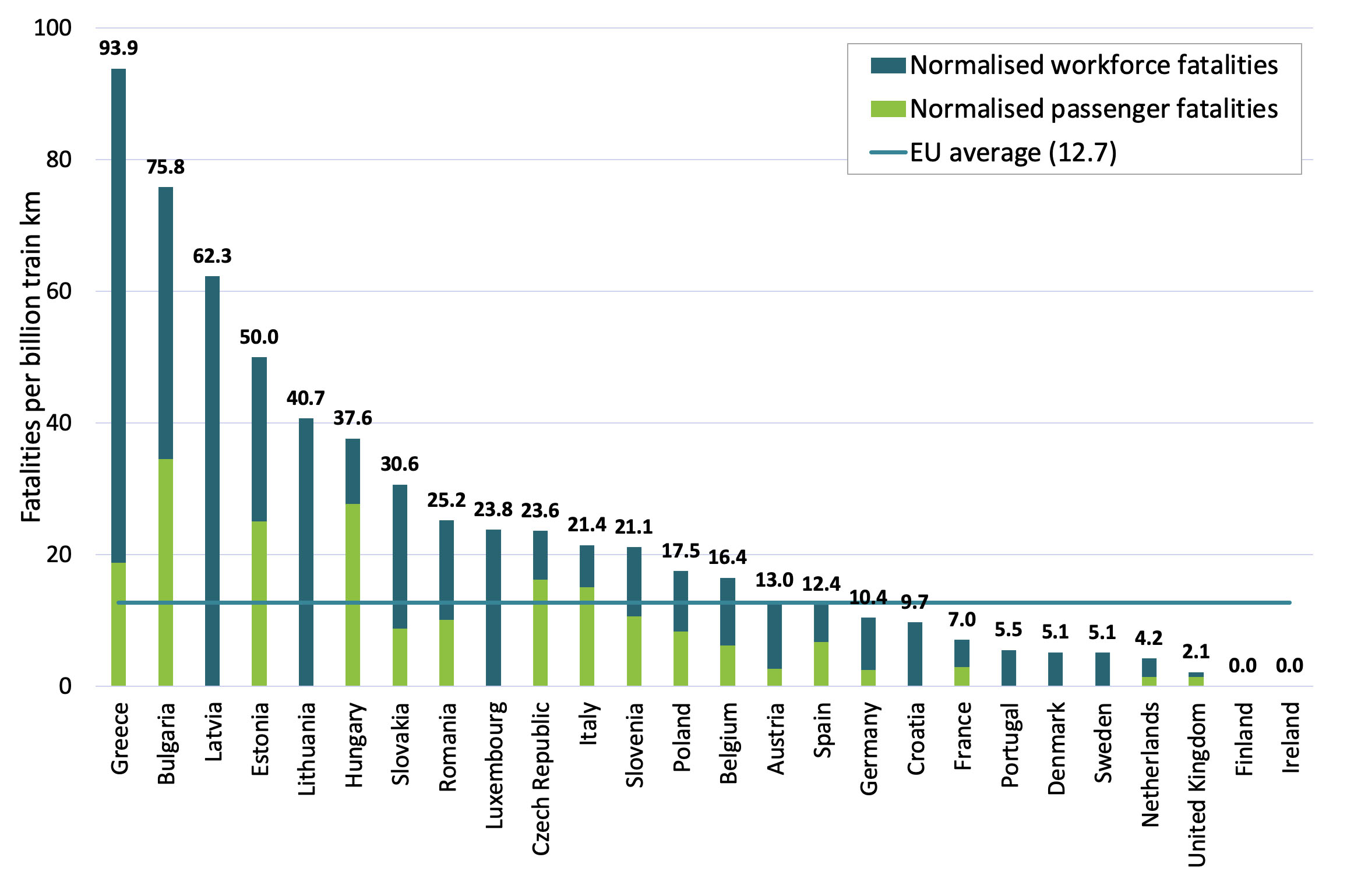The methods used to collect safety data can vary widely between railway administrations as can its quality, making comparisons on a global basis difficult.
Work by the European Commission dating from 2019 suggested that the risk of death for a train passenger within the EU is around 0.09 fatalities per billion train kilometres, nearly one third that for bus and coach passengers and around 28 times less than for car occupants.






